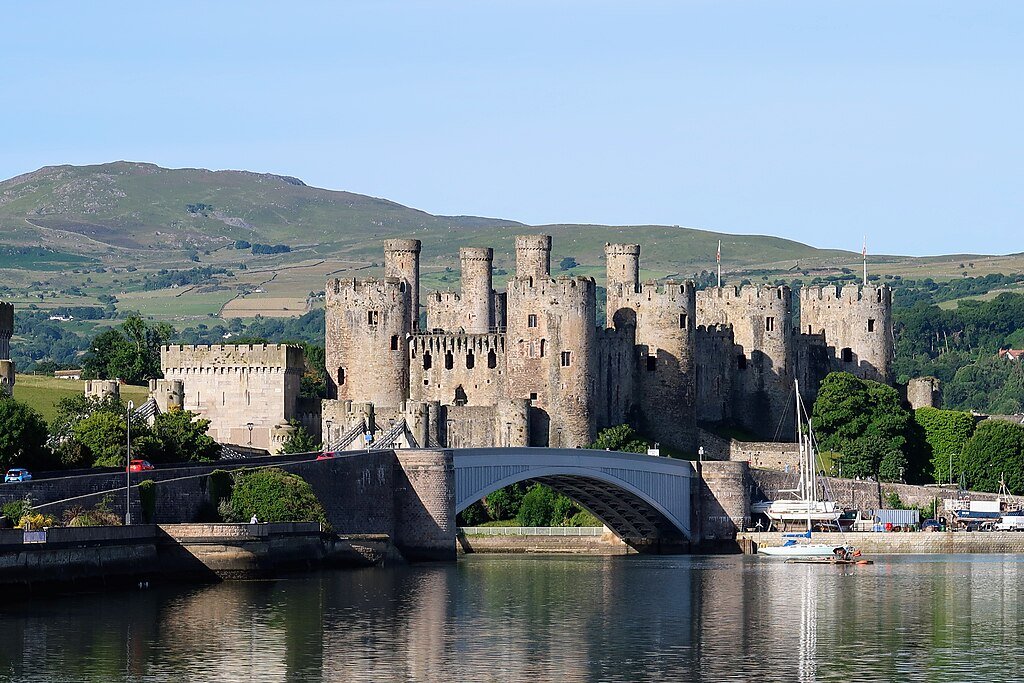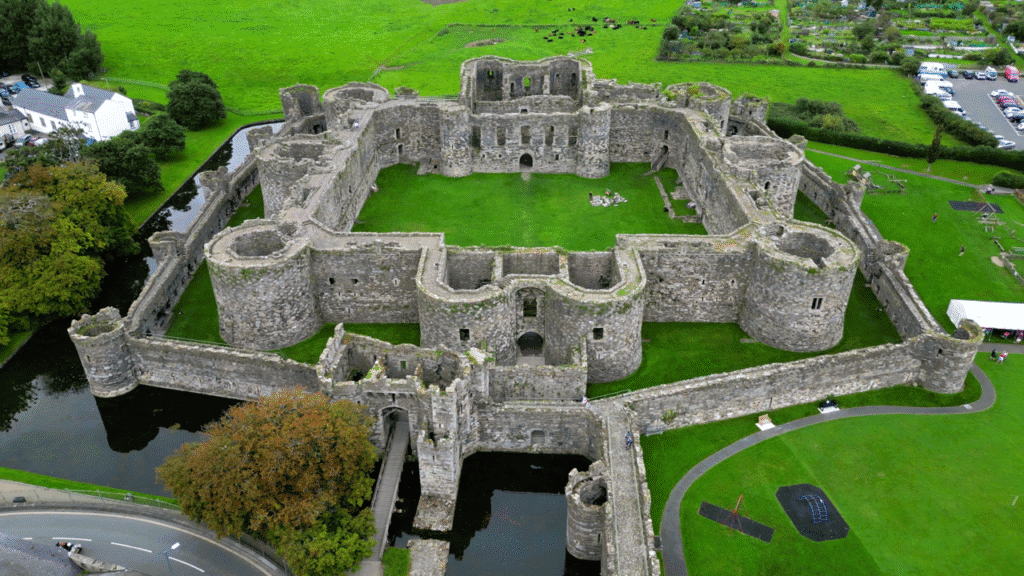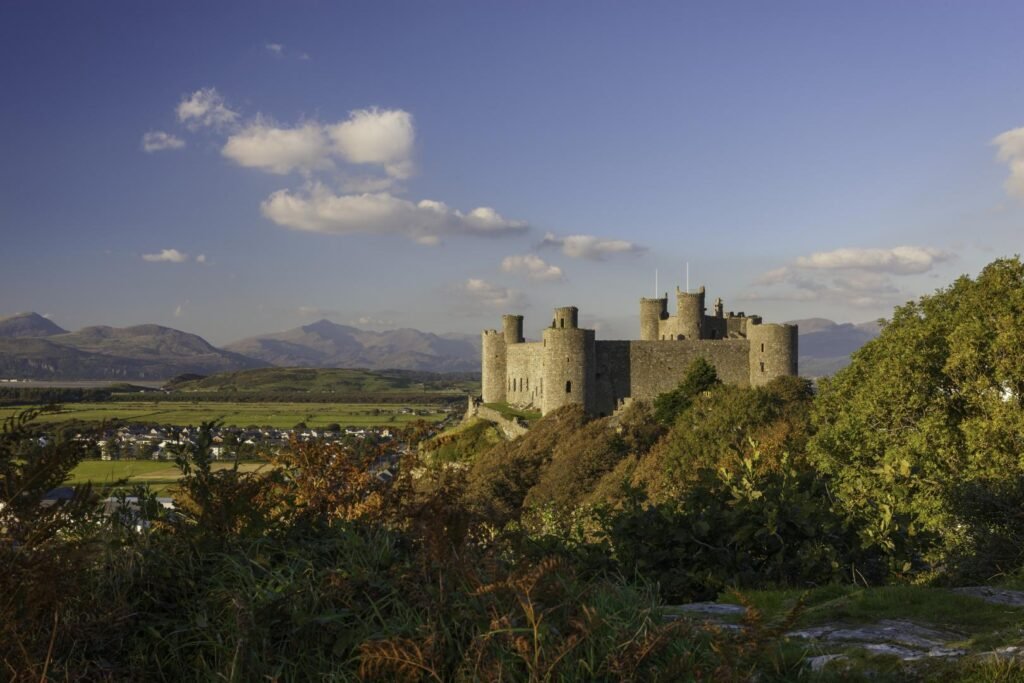
Imagine standing before a fortress so grand it feels like it’s leapt from the pages of a medieval saga. Caernarfon Castle, perched on the banks of the River Seiont in North Wales, is exactly that, a UNESCO World Heritage Site that blends history, legend, and architectural splendour. Whether you’re a family seeking adventure, a couple chasing romantic history, or a solo traveller diving into the UK’s past, this castle is a must-visit. Let’s embark on a journey through Caernarfon Castle, exploring its storied past, practical travel tips, and how it fits into the broader tapestry of UK travel.
A Glimpse into Caernarfon’s Past
Caernarfon Castle’s story begins in the late 13th century, when King Edward I of England set out to cement his control over Wales. Built between 1283 and 1330, the castle was part of his “Iron Ring,” a series of fortresses designed to subdue the Welsh princes. With its imposing polygonal towers and Roman-inspired design, Caernarfon was more than a military stronghold; it was a symbol of English dominance, deliberately evoking the grandeur of Constantinople’s walls and the Welsh myth of Macsen Wledig, a Roman emperor who dreamed of a great fort.
The castle’s historical significance runs deep. It served as the administrative heart of North Wales and was the birthplace of Edward II, the first English Prince of Wales, in 1284. Centuries later, it hosted the investiture of Prince Charles as Prince of Wales in 1969, cementing its ceremonial role. Despite sieges, rebellions, and neglect, Caernarfon has endured, its walls whispering tales of conquest, resilience, and Welsh identity.
This rich history makes Caernarfon a microcosm of the UK’s broader medieval narrative. From the Norman invasions to the Wars of the Roses, castles like Caernarfon are scattered across the UK, each telling a unique story of power, conflict, and culture.
Caernarfon Castle Today: Facts and Figures
Caernarfon Castle is one of four Welsh castles alongside Conwy, Harlech, and Beaumaris designated as a UNESCO World Heritage Site in 1986 for its outstanding medieval architecture. Managed by Cadw, the Welsh Government’s historic environment service, it attracts thousands of visitors annually, making it one of North Wales’ top attractions. Its distinctive features include the Eagle Tower, adorned with stone eagle sculptures, and the King’s Gate, a formidable entrance with five doorways and six portcullises.
The castle spans two wards, connected by a curtain wall with 10 towers, and houses the Royal Welch Fusiliers Museum, which is included in the admission price. In 2025, adult tickets cost £15.20 (June–August) or £14.50 (September–March), with discounts for juniors, seniors, and families. Cadw members enter free, and a 5% discount applies for online bookings. The castle’s upper levels are accessible via a lift at the King’s Gate, though some areas involve narrow, uneven stairs, so visitors with mobility needs should contact the castle in advance.
Caernarfon’s popularity reflects a broader trend in UK tourism: a growing fascination with historic sites. In 2024, Cadw reported over 1.2 million visitors to its sites, with castles like Caernarfon leading the charge. Families are drawn to interactive exhibits, while history buffs revel in the chance to walk in the footsteps of kings. The castle’s blend of accessibility and grandeur makes it a standout in the UK’s constellation of historic attractions.
Must-Visit Attractions at Caernarfon Castle
Caernarfon Castle is the star of the show, but its surroundings and related sites enhance the experience. Here’s what to explore:
Within the Castle
- Eagle Tower: The castle’s most iconic feature, this 10-sided tower offers panoramic views of the Menai Strait and Snowdonia. Climb its spiral staircase for a bird’s-eye perspective.
- King’s Gate: A masterpiece of medieval engineering, this gatehouse showcases the castle’s defensive prowess. Its chapel and upper levels are accessible by lift or stairs.
- Royal Welch Fusiliers Museum: Housed within the castle, this museum traces the history of Wales’ oldest infantry regiment with uniforms, medals, and interactive displays.
- Great Hall: Once the heart of courtly life, this vast space evokes medieval feasts and gatherings.
Nearby Attractions
- Caernarfon Town Walls: Built alongside the castle, these well-preserved walls stretch around the town, offering a short, scenic walk with historical plaques.
- Segontium Roman Fort: Just 1.1 miles away, this 4th-century Roman site provides context for Caernarfon’s ancient roots.
- Caernarfon Maritime Museum: A 10-minute walk from the castle, this museum dives into the town’s seafaring history, perfect for families.
- Snowdonia National Park: A 20-minute drive east, this stunning park offers hiking, climbing, and breathtaking views of Mount Snowdon.
- Anglesey: Across the Menai Strait, this island boasts beaches, historic sites like Beaumaris Castle, and family-friendly attractions like Pili Palas Nature World.
These sites connect Caernarfon to the UK’s wider network of castles and historic landmarks, from Stirling Castle in Scotland to Dover Castle in England, each offering a unique lens on the nation’s past.
Travel Tips for Visiting Caernarfon Castle
Planning a visit to Caernarfon Castle? Here’s how to make it seamless:
- Opening Times: From March to June and September to October, the castle is open 9:30 AM–5:00 PM; July to August, 9:30 AM–6:00 PM; and November to February, 10:00 AM–4:00 PM (closed 24–26 December and 1 January). Last admission is 30 minutes before closing.
- Booking: Save 5% by booking tickets online at least 24 hours in advance via the Cadw website. Family tickets (two adults, up to three children) cost £48.70 (summer) or £46.40 (off-season).
- Accessibility: The King’s Gate lift provides access to upper levels, but spiral staircases and uneven terrain may challenge those with mobility issues. Contact the castle at 01286 677617 to arrange assistance or reserve a timeslot.
- Family-Friendliness: The castle is a hit with kids, thanks to its maze-like passages and interactive exhibits. The Royal Welch Fusiliers Museum offers child-friendly displays, and picnic areas are available.
- When to Go: Summer (July–August) offers longer hours and warm weather but draws crowds. Spring (March–June) and autumn (September–October) provide milder weather and fewer visitors. Winter offers a quieter experience, though some facilities may be limited.
- What to Bring: Wear comfortable shoes for uneven surfaces, and pack rain gear for Wales’ unpredictable weather. A camera is a must for capturing the castle’s photogenic towers and views.
These tips apply broadly to UK castle visits. Always check opening hours, as many historic sites adjust seasonally, and book ahead for popular attractions like Warwick or Edinburgh Castle to avoid queues.
Suggested Itineraries: Exploring Caernarfon and Beyond
Caernarfon Castle is a perfect anchor for a North Wales adventure. Here are three itineraries catering to different travellers:
One-Day Family Adventure
- Morning: Start at Caernarfon Castle (2–3 hours). Explore the Eagle Tower, King’s Gate, and Royal Welch Fusiliers Museum. Kids will love the narrow passages and battlements.
- Lunch: Head to The Black Boy Inn, a historic pub 0.2 miles away, for family-friendly meals like fish and chips.
- Afternoon: Walk the Caernarfon Town Walls (1 hour), then visit the Caernarfon Maritime Museum for a quick dive into local history.
- Evening: Drive 15 minutes to Dinas Dinlle Beach for a sunset stroll and ice cream from the beach café.
Romantic Weekend for Couples
- Day 1: Arrive in Caernarfon and check into the Celtic Royal Hotel. Spend the afternoon touring the castle, lingering at the Great Hall and Eagle Tower for photos. Dine at Osteria, an Italian restaurant with a cosy vibe, just 0.3 miles from the castle.
- Day 2: Drive 20 minutes to Snowdonia National Park for a scenic hike, such as the Aber Falls trail (easy, 2 hours). Return to Caernarfon for dinner at The Anglesey Arms, overlooking the Menai Strait.
- Day 3: Visit Anglesey for a morning at Beaumaris Castle, another Edwardian gem, before heading back.
Five-Day Solo Explorer’s Route
- Day 1: Begin at Caernarfon Castle, taking a guided tour for in-depth history. Stay at Totters Hostel for a budget-friendly base.
- Day 2: Explore Segontium Roman Fort and the Caernarfon Town Walls, then relax at a café like Palas Caffi.
- Day 3: Take a day trip to Conwy (30 minutes by car) to visit Conwy Castle and its medieval walls.
- Day 4: Venture to Harlech Castle (1 hour drive) and explore the nearby Harlech Beach.
- Day 5: Head to Snowdonia for a challenging hike up Mount Snowdon or a scenic train ride on the Snowdon Mountain Railway.
These itineraries reflect the UK’s appeal as a destination for layered exploration. Combine castle visits with coastal walks, city breaks, or countryside hikes to craft a trip that suits your pace.
Where to Eat and Stay Near Caernarfon Castle
Dining
Caernarfon’s dining scene blends traditional Welsh fare with modern options, all within walking distance of the castle:
- The Black Boy Inn (0.2 miles): A 16th-century pub serving hearty dishes like Welsh lamb shank and homemade pies. Family-friendly with a cozy atmosphere.
- Osteria (0.3 miles): Perfect for couples, this Italian eatery offers wood-fired pizzas and seafood pastas in a warm setting.
- Palas Caffi (0.1 miles): A charming café for solo travellers, with light bites, Welsh cakes, and excellent coffee.
- The Anglesey Arms (0.4 miles): Enjoy pub classics with views of the Menai Strait, ideal for a romantic dinner or post-castle pint.
Accommodation
Caernarfon offers options for every budget, from luxury hotels to cosy B&Bs:
- Celtic Royal Hotel (0.5 miles): A 3-star hotel with spa facilities, perfect for couples seeking comfort. Rooms start at £120/night.
- Totters Hostel (0.3 miles): Budget-friendly for solo travellers, with dorms from £25/night and a communal vibe.
- Ty Dre Town House (0.2 miles): A family-friendly guesthouse with spacious rooms and breakfast included, from £90/night.
- Bryn Min Manton Apartment (0.5 miles): A self-catering option for families, sleeping up to four, from £100/night.
These dining and lodging options mirror the UK’s broader hospitality landscape, where historic pubs, modern eateries, and varied accommodations cater to all travellers.
Seasonal Events and Special Experiences
Caernarfon Castle and its surroundings come alive with events that enhance your visit:
- Caernarfon Food Festival (May): Held in the town centre, this festival celebrates Welsh produce with street food, live music, and family activities.
- Gwynedd History Festival (September): Features reenactments, medieval workshops, and guided castle tours, perfect for history buffs.
- Christmas at the Castle (December): The castle hosts a festive market with local crafts, mulled wine, and carol singing.
- Investiture Anniversary Tours (July): Special guided tours commemorate the 1969 investiture of Prince Charles, offering exclusive access to ceremonial areas.
Across the UK, seasonal events at historic sites, like York’s Viking Festival or Edinburgh’s Fringe, add vibrancy to travel plans. Check Cadw’s website for Caernarfon’s event calendar and book early for popular festivals.
Why Caernarfon Castle Is a UK Travel Gem
Caernarfon Castle is more than a historic site; it’s a gateway to exploring the UK’s rich heritage. Its towers and tales connect to a broader network of castles, from the rugged cliffs of Tintagel in Cornwall to the fairy-tale turrets of Balmoral in Scotland. Whether you’re scaling its battlements, wandering Caernarfon’s charming streets, or venturing into Snowdonia’s wilds, this medieval marvel offers something for everyone.
For families, it’s a playground of history and adventure. Couples will find romance in its ancient walls and scenic surroundings. Solo travellers can lose themselves in its stories and connect with fellow explorers. As you plan your UK adventure, let Caernarfon Castle be your starting point – a place where the past comes alive, and the journey is just beginning.


